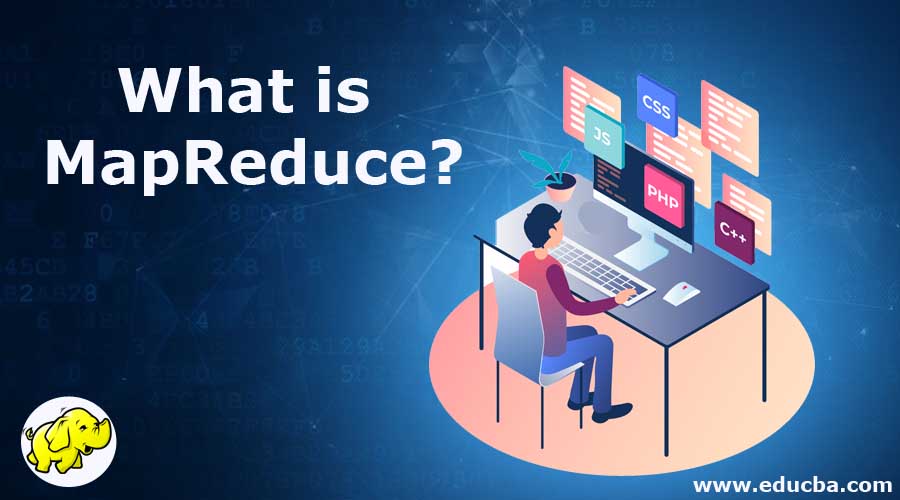Updated May 18, 2023
What is MapReduce?
MapReduce is a programming model for enormous data processing. We can write MapReduce programs in various programming languages like C++, Ruby, Java, and Python. Parallel to the MapReduce programs, they are very useful in large-scale data analysis using several cluster machines. MapReduce’s biggest advantage is that data processing is easy to scale over multiple computer nodes. The primitive processing of the data is called mappers and reducers under the MapReduce model. It is sometimes nontrivial to break down an application for data processing into mappers and reducers.
Top 3 Stages of MapReduce
There are namely three stages in the program:
- Map Stage
- Shuffle Stage
- Reduce Stage
Example:
Following is an example mentioned:
Wordcount problem:
Suppose below is the input data:
- Mike Jon Jake
- Paul Paul Jake
- Mike Paul Jon
1. The above data is divided into three input splits.
- Mike Jon Jake
- Paul Paul Jake
- Mike Paul Jon
2. Then, this data is fed into the next phase, called the mapping phase.
So, for the first line (Mike Jon Jake), we have 3 key-value pairs – Mike, 1; Jon, 1; Jake, 1.
Below is the result of the mapping phase:
- Mike,1
Jon,1
Jake,1 - Paul,1
Paul,1
Jake,1 - Mike,1
Paul,1
Jon,1
3. The above data is fed into the next phase, the sorting and shuffling phase.
In this phase, the data is sorted into unique keys. Below is the result of the sorting and shuffling phase:
- Jake,(1,1)
- Jon,(1,1)
- Mike,(1,1)
- Paul,(1,1,1)
4. The above data is fed into the next phase, the reduce phase.
Here all the key values are aggregated, and the number of 1s is counted.
Below is the result in reduce phase:
- Jake,2
- Jon,2
- Mike,2
- Paul,3
Advantages of MapReduce
Given below are the advantages mentioned:
1. Scalability
Hadoop is a highly scalable platform and is large because of its ability that stores and distributes large data sets across lots of servers. The servers used here are quite inexpensive and can operate in parallel. The system’s processing power can be improved by adding more servers. Traditional relational database management systems or RDBMS could not scale to process huge data sets.
2. Flexibility
The Hadoop MapReduce programming model offers flexibility to process structured or unstructured data by various business organizations that can use and operate on different data types. Thus, they can generate business value from those meaningful and valuable data for the business organizations for analysis. Irrespective of the data source, whether social media, clickstream, email, etc. Hadoop offers support for a lot of languages used for data processing. Hadoop MapReduce programming allows many applications, such as marketing analysis, recommendation systems, data warehouses, and fraud detection.
3. Security and Authentication
Suppose any outsider can access all the organization’s data and manipulate multiple petabytes. In that case, it can do much harm in terms of business dealing in operation to the business organization. The MapReduce programming model addresses this risk by working with hdfs, and HBase allows high security allowing only the approved user to operate on the stored data in the system.
4. Cost-effective Solution
Such a system is highly scalable and is a very cost-effective solution for a business model that needs to store data growing exponentially in line with current-day requirements. In the case of traditional relational database management systems, it was not so easy to process the data as with the Hadoop system regarding scalability. In such cases, the business was forced to downsize the data and further implement classification based on assumptions of how specific data could be valuable to the organization, hence removing the raw data. Here the Hadoop scaleout architecture with MapReduce programming comes to the rescue.
5. Fast
Hadoop distributed file system HDFS is a key feature used in Hadoop, which is implementing a mapping system to locate data in a cluster. MapReduce programming is the tool used for data processing, and it is also located on the same server, allowing faster data processing. Hadoop MapReduce processes large volumes of unstructured or semi-structured data in less time.
6. Simple Model of Programming
MapReduce programming is based on a very simple programming model, which allows programmers to develop a MapReduce program that can handle many more tasks more quickly and efficiently. Many programmers find the MapReduce programming model, written using the Java language, to be very popular and easy to learn. It is easy for people to learn Java programming and design a data processing model that meets their business needs.
7. Parallel Processing
The programming model divides the tasks to allow the execution of the independent task in parallel. Hence, this parallel processing makes it easier for the processes to take on each task, which helps run the program in less time.
8. Availability and Resilient Nature
The Hadoop MapReduce programming model processes the data by sending the data to an individual node and forwarding the same data set to the other nodes residing in the network. As a result, in the event of a failure in a specific node, the other nodes still retain an exact copy of the data, ensuring data availability when needed. In this way, Hadoop is fault-tolerant. This unique functionality offered in Hadoop MapReduce is that it can quickly recognize the fault and apply a quick fix for an automatic recovery solution.
There are many companies across the globe using map-reduce, like Facebook, Yahoo, etc.
Conclusion
Map-reduce has a significant capability for large data processing compared to traditional RDBMS systems. Many organizations have already realized its potential and are adopting this new technology. Map-reduce has a very long to go in a big data processing platform.
Recommended Articles
This has been a guide to What is MapReduce? Here we discussed the basic concept, the top 3 stages of MapReduce, and the advantages of MapReduce, respectively. You can also go through our other suggested articles to learn more –



